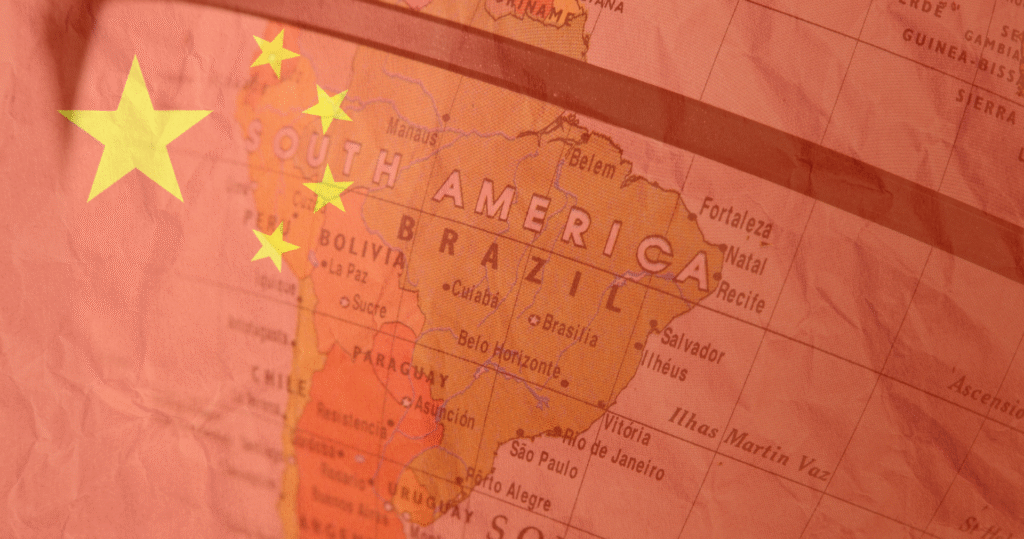29 May Dissecting the Myth: How Naive Narratives on U.S. Sanctions Enable China’s Strategic Advance in Latin America
Executive Strategic Brief
By,
Dr. Rafael Marrero. Chief Economist, President and Founder, MSI²
Introduction: A recent narrative circulating in geopolitical discourse promotes the flawed and oversimplified argument that U.S. sanctions are primarily responsible for the People’s Republic of China’s (PRC) expanding influence in Latin America.
While it is true that Washington’s inconsistent policies have occasionally created gaps in engagement, blaming U.S. sanctions for China’s strategic penetration ignores the broader and more coercive nature of Beijing’s long-term objectives. This brief exposes the limitations of that narrative and underscores how such arguments—often inspired by left-leaning dependency theory—are detrimental to democratic development and regional security.
Core Misconceptions and Strategic Rebuttals
1. Multi-alignment as Illusion, Not Strategy
Proponents of multi-alignment suggest that Latin America can benefit from close ties with the U.S. and China. However, geopolitical reality reveals that overreliance on Chinese state-owned enterprises (SOEs) creates asymmetrical dependencies. The 2017 PRC National Intelligence Law mandates all Chinese firms to cooperate with intelligence services, turning infrastructure projects into potential espionage tools (Wilson Center, 2023).
2. Romanticizing China’s Development Model
The notion that China’s “no-strings” investment model is a pragmatic alternative to Western conditionality is dangerously naive. In practice, these deals often exacerbate corruption, environmental degradation, and labor abuses, as seen in Ecuador, Venezuela, and Bolivia (Human Rights Watch, 2022; International Crisis Group, 2023). In Sri Lanka, the Hambantota Port project resulted in Beijing seizing control of strategic assets after a debt default—a cautionary tale for Latin America.
3. The False Link Between U.S. Sanctions and Chinese Expansion
Beijing’s regional investments predate recent U.S. sanctions. The Belt and Road Initiative (BRI) began penetrating the region between 2015 and 2018, years before intensified U.S. trade measures (Ellis, 2023). The PRC’s ambitions are proactive, not reactionary. Far from a benign infrastructure program, the BRI operates as a covert mechanism of debt-trap diplomacy. The CCP secures long-term control over critical infrastructure through large-scale, opaque loans when partner nations default. As outlined in Marrero (2025) and Marrero (2022), BRI projects embed dependency, erode sovereignty, and provide the PRC with dual-use capabilities under the guise of development.
4. Economic Engagement as Coercive Statecraft
The narrative downplays the political leverage embedded in China’s economic overtures. Resource-backed loans and technology transfers from Chinese firms like Huawei and ZTE embed surveillance and security vulnerabilities into national systems, compromising sovereignty (CSIS, 2024).
5. Moral Equivalency Undermines Democratic Norms
Equating U.S. political conditionality with Chinese authoritarian capital dilutes essential democratic safeguards. Unlike Beijing, Washington imposes anti-corruption and transparency conditions to protect institutional integrity. Case in point: Zambia, Laos, and the Maldives—all struggling under the weight of unsustainable Chinese debt—highlight how moral relativism empowers autocracy.

Strategic Consequences for Latin America
• Enabling Authoritarian Drift: Embracing PRC influence legitimizes autocratic regimes and undermines democratic resilience.
• Technological Vulnerability: Chinese 5G infrastructure and cloud computing systems are Trojan horses for strategic espionage.
• Debt and Dependence: Resource-for-loans schemes have already compromised economic sovereignty across multiple nations.
Conclusion: Toward a Clear-Eyed Strategy
While ostensibly balanced, this narrative rests on premises shaped by dependency theory and anti-Western rhetoric. Latin America must recognize that China’s economic overtures are not benign, and Washington must provide strategic alternatives rooted in shared democratic values. The region’s long-term prosperity lies not in neutrality but in principled alignment with the rule of law and transparency.
References
Center for Strategic and International Studies (CSIS). (2024). Huawei’s footprint in Latin America. Washington, DC.
Ellis, E. (2023). The Strategic Logic of China’s Latin American Engagement. U.S. Army War College.
Human Rights Watch. (2022). Broken Promises: Chinese Investment and Environmental Damage in Latin America.
International Crisis Group. (2023). China’s Influence in Latin America: Risks and Realities.
Wilson Center. (2023). China’s Digital Silk Road and Latin America’s Security Future. Washington, DC.
Freedom House. (2023). Beijing’s Global Media Influence: Authoritarian Expansion and Democratic Pushback.
Transparency International. (2023). Corruption Perceptions Index Report: Impacts of Foreign Investment in Authoritarian Contexts.
Lowy Institute. (2022). Mapping China’s Footprint: Influence and Vulnerability in the Global South.
Marrero, R. (2025). La última frontera: Crónica de la resistencia de EE.UU. contra China. Bravo Zulu Publishers.
Marrero, R. (2022). América 2.0: La guerra de independencia de EE.UU. contra China. Bravo Zulu Publishers.
The opinions expressed in this article are those of the author and do not necessarily reflect the views of the Miami Strategic Intelligence Institute (MSI²).
